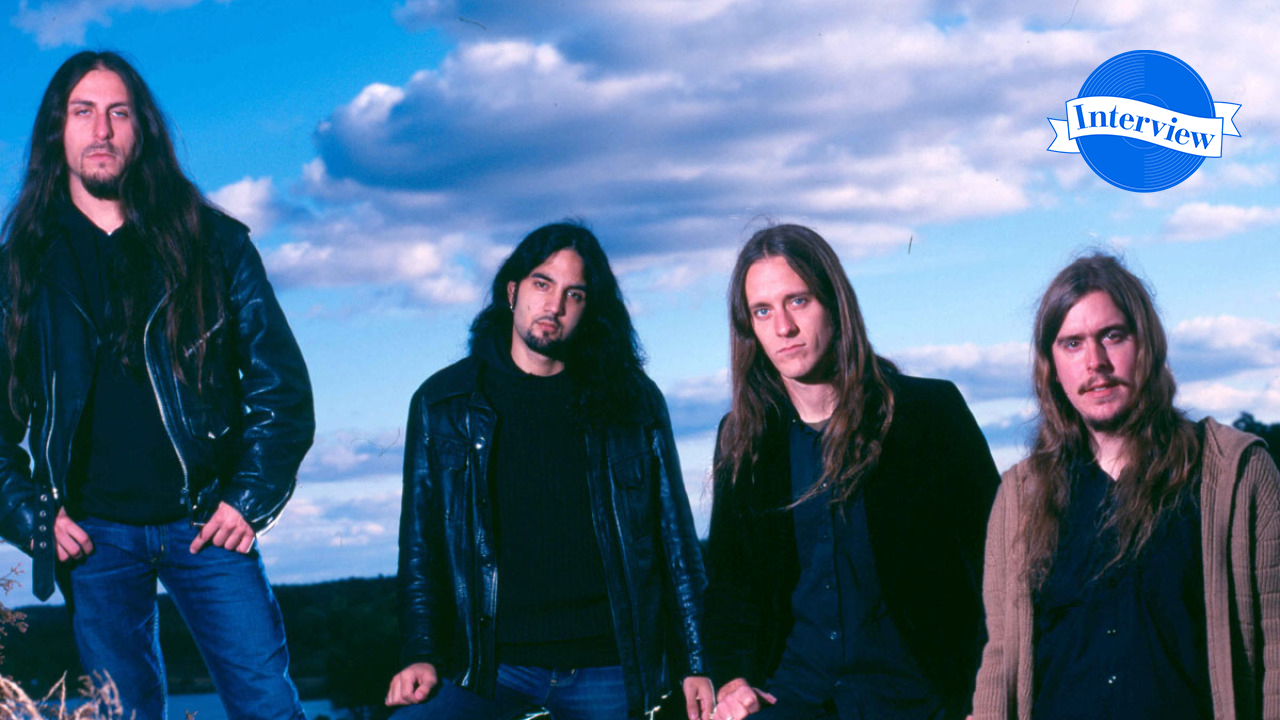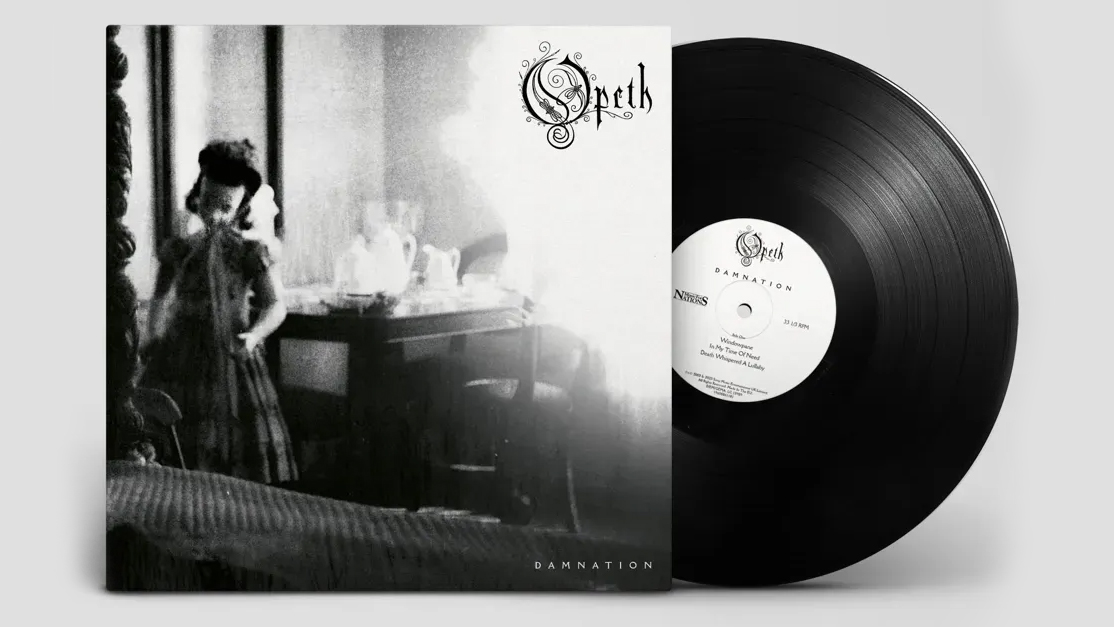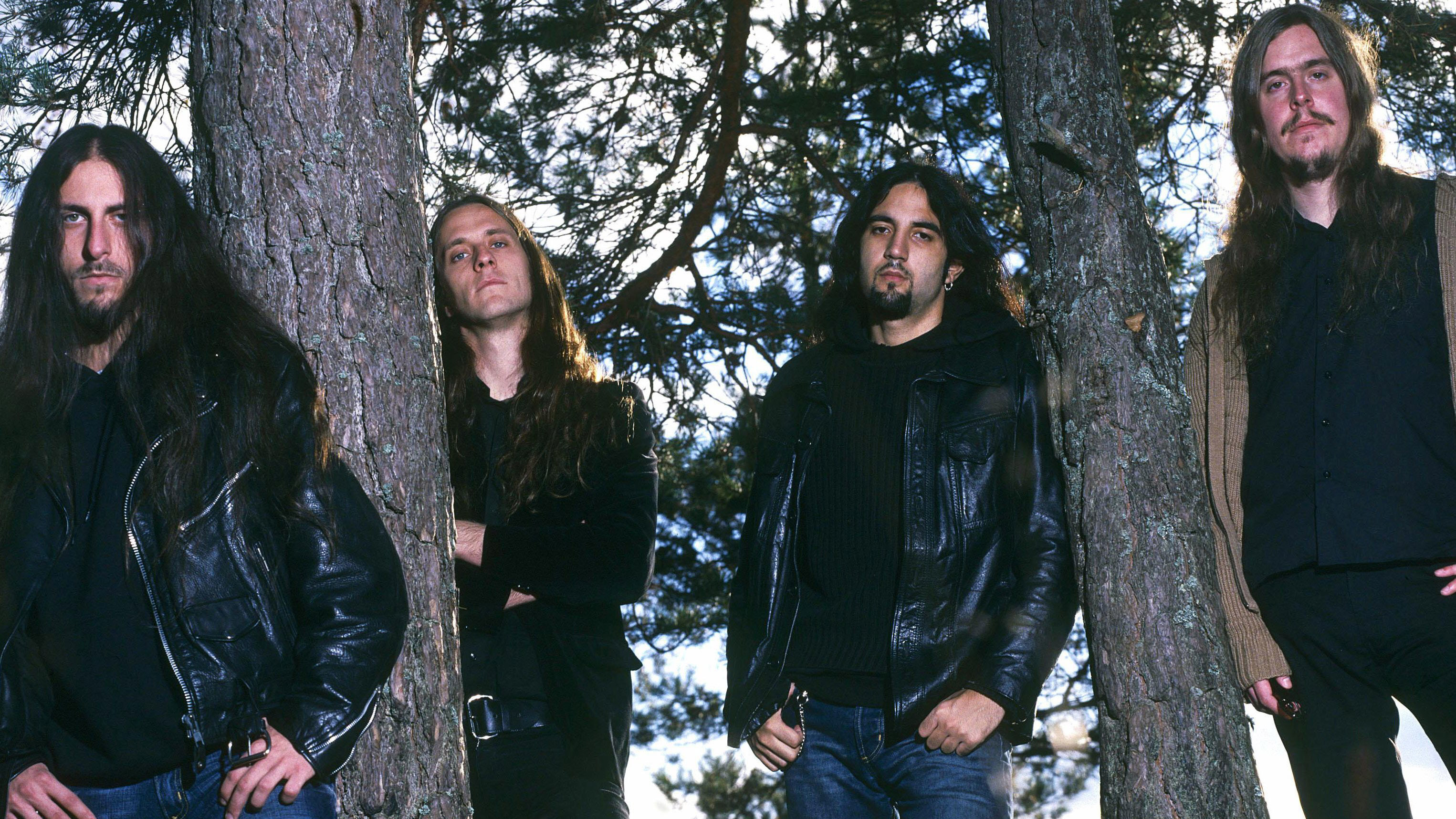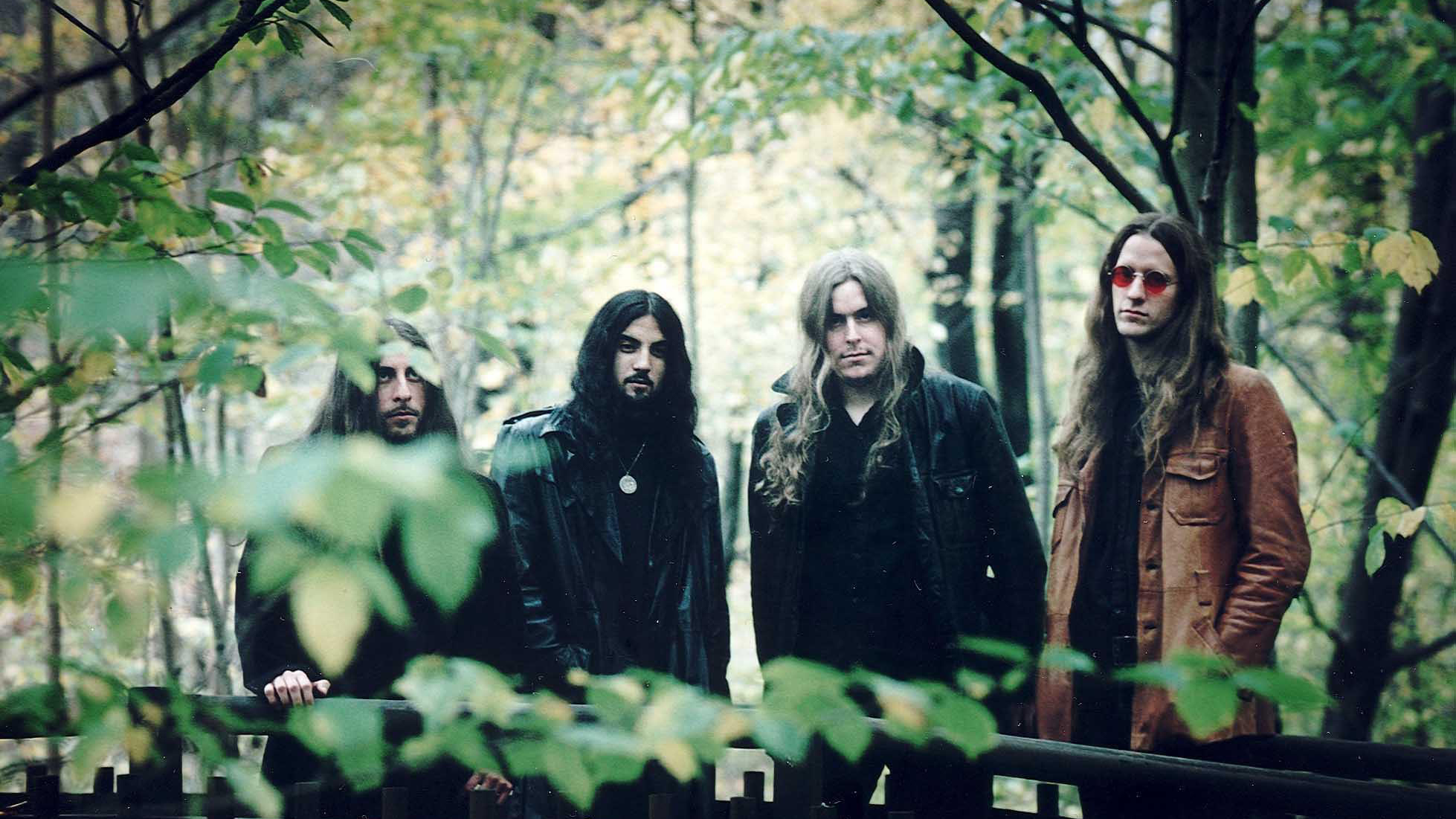Mikael Åkerfeldt reflects on Opeth's Damnation album: “Maybe we helped show people that experimentation isn’t necessarily a horrible thing – you should take your guard down when it comes to creativity”
Ahead of the reissue to mark its 20th anniversary, the Swedish band's 'mellow' album is rightly remembered as a brave and successful step forwards: “It was like starting from scratch with lots of experience and no distortion!” its mastermind tells us

Though it’s widely hailed as one of the greatest progressive rock releases this side of the millennium, when Opeth mastermind Mikael Åkerfeldt was contemplating 2003’s Damnation – an experimental “calm” record for release alongside the brutal assault of sixth album Deliverance – he wasn’t too sure how it would be received. The Swedish quartet were just starting to establish themselves out of the extreme metal underground and build momentum as a worldwide force, so in his eyes it seemed like a risky move at a crucial time.
Thankfully, they chose to gamble and turn down the distortion for what would become one of their most universally admired recordings. A love letter to the leftfield and obscure sounds of the '70s, combining beautiful folk balladry with intense atmospheres that seduce as much as they threaten, Damnation would find a special place in the hearts of progressive rock fans around the world and leave many a listener addicted to its ethereal charms. The band had always taken influence from well outside the genre they operated in, with musical concepts rooted in classical and jazz to be found as far back as their 1995 debut, but this was very much a step into the unknown…
I didn’t know if people would think we were lame
“Damnation was our opportunity to step back and do something totally different,” Åkerfeldt tells MusicRadar from his living room on a frosty Autumnal night in Stockholm. “In those days I would have been a bit wary of how this record would be received. I didn’t know if people would think we were lame. I clearly wanted to be ‘the metal guy’ and looked for acceptance from that community, because our career was just starting to happen. Now I’m really happy we did that record and it came out the way it did because of Deliverance being so full-on. They helped each other in that regard. Both of them are a bit flawed, just because of the amount of work required to put them together, but I’m very proud of them.”

To mark the album’s 20th anniversary, Music For Nations will be reissuing Damnation on 15 December via standard black vinyl, as well as other limited-run colour finishes, and, for the very first time, on picture disc. The album had been remixed and remastered by original co-producer Steven Wilson in 2015 and released as a double package with Deliverance. This time they’re commemorating Damnation alone, which follows the Abbey Road remasters of the band’s first three albums back in May. Being an avid vinyl collector himself, the Opeth leader is naturally pleased about the great demand for his own music on his format of choice…
“This is the first time it’s been reissued alone,” he continues. “It was remixed and remastered by Steven Wilson in 2015, but this time just the one record. We wanted to keep it available on vinyl and it’s been 20 years, so it made sense. I haven’t been to a studio to sort through takes or anything because as far as I’m concerned, there was nothing wrong with it!”
Which begs the question – will there be any special releases for the 25th anniversary of fourth opus Still Life next year?
“It’s hard to keep track of everything,” laughs Åkerfeldt. “But Peaceville [Records] have been in touch about doing a boxset type thing. I’m struggling to see what could be in it. We’re not like The Rolling Stones, where everything has been documented since forever. There’s not much bonus material or anything like that, but who knows. Sometimes I’m more involved with the reissues, like going to Abbey Road for those early album remasters, and sometimes less so. They might just need my blessing…”
Get the MusicRadar Newsletter
Want all the hottest music and gear news, reviews, deals, features and more, direct to your inbox? Sign up here.

Though it has its vintage influences, Damnation doesn’t sound dated and has aged very well…
Damnation was a simple recording, which I think helped
“It’s funny you say it hasn’t aged because maybe some of our earlier metal-sounding albums do sound a bit dated, at least in terms of the sonic treatment. Technology at the time was changing – especially for heavier music with new stuff like triggered drums. So yeah, in the early days, the production probably wasn’t that great. But Damnation was a simple recording, which I think helped. A few microphones, a couple of acoustic guitars and a few other things. It was an old school tape kind of recording.”
Though you’d used a Jackson Randy Rhoads and a black Strat on early tours, you’d been playing PRS electrics for a few years by this point. Is that what ended up on the album?
“Yeah, I remember having two PRS guitars with me. There was the CE24, which was my first one… also known as the Blackwater Park guitar! And there was the blue Custom 24. Both guitars got used on the record, which is kind of interesting because I think of this album more like a Strat record, to be honest. If I was making Damnation today, it would definitely be single-coils.”
So you probably stuck with the neck pickup, or maybe even the middle setting, to get more of a Strat tone out of your PRS?
“I guess so! Steven Wilson was heavily involved in the production of the clean guitars. It was nothing really premeditated or particularly special – we just found a nice clean sound and that was that. I’m pretty easy, if I find a sound I like, I’m happy to keep it for the whole album. I’m not like [current Opeth lead guitarist] Fredrik Åkesson, who is always searching for new tones.
"It was a very straight recording in that sense. And though it’s vintage-sounding, it wasn’t a vintage gear album. The electric guitars were PRS and the mellotrons were MIDI sounds. There’s actually no real mellotron on the record! But Steven knew all that modern stuff like the back of his hand. I just said ‘I want a nice King Crimson sound, can you get that?’ and he said ‘Sure!’”
We didn’t bring any amps to the recording of those two records
As for amps, it was definitely more of a clean channel affair than your higher gain recordings of the past…
“It was probably a Fender Twin at the studio. We didn’t bring any amps to the recording of those two records. We were at the mercy of Studio Fredman, and Maestro Musik, because we did some stuff there, too. I remember Studio Fredman had Engl amps and 5150s, but it would be a fair guess to say we used the Fender. There could even have been some virtual amps because Steven was using a lot of that early computer shit. And as for the acoustics, it was just a nice Neumann [mic] stuck in front.”
So what was the main acoustic for the record?
“I’m not sure if I had a Martin by this point, so I think it was most likely the Seagull acoustic. They’re a Canadian brand and it was a good guitar. It’s the one I used on Blackwater Park. It came to me in two pieces, with the neck unattached to the body. I got the guitar for free from a dealer and had to glue it all together. That thing got used a lot in those days and not long after that I got my first Martin.”
The opening track, Windowpane, is the one you’ve performed most live. Your minor solo towards the end is very lyrical – choice notes are employed to tell a story…
“Thank you. I like that solo a lot. When we play live, I usually don’t like the ones where I feel exposed and this is one of those moments where I am exposed, because the band go quiet and I’m playing over the top. But for some reason I always feel ‘in the zone’ for that solo. I actually like playing it live and rarely f**k it up!
You play that little melody to start it off and then you’re in there. It’s a pleasure to play. There’s only a small portion of our music where I feel really secure about being in the spotlight like that and this is definitely one. Most of the time I’m like ‘Don’t fuck up, don’t fuck up!’”
In My Time Of Need is a very open-sounding track with lots of space for notes to ring into each other. It goes from very sparse with lots of reverb to big shimmering acoustics for the chorus…
The working title for it was ‘Old Man’s Rock’ or ‘Gubbe Rock’ in Swedish, because there’s very little finesse there
“It’s a very normal song to me. The working title for it was ‘Old Man’s Rock’ or ‘Gubbe Rock’ in Swedish, because there’s very little finesse there. I wanted it to have a big chorus, an evocative verse but keep it very simple.
"I remember liking the opening line, which uses notes on the seventh fret against open strings, because it had a nice mournful feel. That set the whole thing off. But it’s super simple… if we were struggling on the spot to pick a song to play from that record, it would be an easy one that requires no rehearsal!”
The intro for Death Whispered A Lullaby has a dramatic semitone shift from a F# power chord to a G6/9 kind of thing…
“I guess I found that shift interesting. That’s what was really fun about Damnation. We could linger on easy chords, especially if we were breaking them up a bit and letting them ring. The simple themes and open sounds worked really well because we were rolling the distortion back. It was like starting from scratch with lots of experience and no distortion! Which is what made it fun.
"I wouldn’t say this song is that innovative. I don’t particularly like playing it. Weirdly enough, [ex-drummer] Axe loved it and pushed for playing it… it was actually quite difficult to pull off!”
There’s a riff halfway into Closure that is arguably one of the very finest on the album – it’s the one that starts with an Emin(add11) shape and ends with a strange flutter around the sixth and fourth frets…
“That end bit is a hammer-on from open to the sixth fret on the low E-string and then I also play the fourth fret on the A-string and let the open D ring before striking the A-string again. I don’t know how I came up with that!
That’s how I judge our past music – would it be relevant today?
"I do think this song is special. I’m a huge fan of Friends… no, not the TV series, but the song by Led Zeppelin which also has that big D strum vibe to it. But what we did was quite original and doesn’t sound like Led Zeppelin. There are some really cool riffs in there. I know if I wrote those ideas today, I’d be like ‘Yeah, let’s keep that!’ And that’s how I judge our past music – would it be relevant today? There are parts of every record which have moments that makes me feel like that.”
Hope Leaves is one of the more beautiful moments on the record – remarkably simple in its elegance…
“It’s another straightforward one, a bit like In My Time Of Need. It was inspired by one of the tracks from Operation: Mindcrime by Queensrÿche. Like some of those sections of Windowpane, I always feel in the zone when we play this one live… the whole way through, in fact. The overall vibe of the song makes me feel secure, I know what to do and can sing it with feeling. It’s definitely a keeper!
"We had a capo on the second fret for the recording but when we play it live nowadays we don’t use one… it’s actually a big stretch in open position! The other capo song is Windowpane, but we still use one for that. There was actually no need for a capo on Windowpane, I just felt it sounded cool. On Hope Leaves it actually served a purpose because of the big stretch. But singing this song live with the capo was harder… my voice sounded a bit thin, so it made sense to get rid of the capo.”
From what you’ve told us in the past, To Rid The Disease shares its chorus with a song from an obscure project of yours called Sörskogen…
“I can’t remember the inspiration for it, but yeah, the chorus came from Sörskogen – we only had one song called Mordet i Grottan. I really like how the solo came out and the chord progression behind it. This is another song that I feel has stood the test of time and I guess that’s why it’s another we tend to play a lot.”
If you’re a beginner, you could learn this song and play it well quite easily
Ending Credits feels very Les Paul on the neck pickup à la Cream or Camel?
“I never listened to much Clapton, at least in those days, so it was probably more Camel. There’s no deep meaning to this track. To my ears it sounded like the ending credits to a film, so that’s why I called it that. I don’t know if I would put it on an album now. If you’re a beginner, you could learn this song and play it well quite easily, there’s just one bend and the rest is very straightforward.
"There was actually another instrumental track that we didn’t have time to finish. It was recorded – at least as far as drums, bass and maybe some guitars. The working title for Ending Credits was ‘Film One’ and this other track was called ‘Film Two’. It’s never been released. But looking back now, I think it was the better song out of the two [laughs]! It had a Robin Trower kind of sound to it. I think it went from Amin to G# to Cmin to F# and was just a long jam. I’m sad we never finished it, I have the tapes in the basement but it was never completed.”
So could that ever be the first track on a future album? Would Damnation Two ever happen?
“No. Well, at least in terms of album titles, I don’t really like the idea of a sequel. We’ve moved on a little bit. I’d be happy to make a calm record, though. I just wouldn’t call it Damnation Two! In all honesty, would people even want to hear it?!”
We’d like to think so!
“I appreciate that. It is special to us. I think it helped us. Maybe it helped other extreme metal bands move on to different things. Maybe we helped show people that experimentation isn’t necessarily a horrible thing – you should take your guard down when it comes to creativity. Then again, I’ve never heard anyone say Damnation means something to the scene or whatever. But it definitely ended up being really important for us. After Damnation, I felt we could do whatever we wanted.”
- The 20th Anniversary Edition of Damnation is released on 15 December. Preorders are available here
Amit has been writing for titles like Total Guitar, MusicRadar and Guitar World for over a decade and counts Richie Kotzen, Guthrie Govan and Jeff Beck among his primary influences. He's interviewed everyone from Ozzy Osbourne and Lemmy to Slash and Jimmy Page, and once even traded solos with a member of Slayer on a track released internationally. As a session guitarist, he's played alongside members of Judas Priest and Uriah Heep in London ensemble Metalworks, as well as handling lead guitars for legends like Glen Matlock (Sex Pistols, The Faces) and Stu Hamm (Steve Vai, Joe Satriani, G3).
"Reggae is more freeform than the blues. But more important, reggae is for everyone": Bob Marley and the Wailers' Catch a Fire, track-by-track
“Part of a beautiful American tradition”: A music theory expert explains the country roots of Beyoncé’s Texas Hold ‘Em, and why it also owes a debt to the blues











